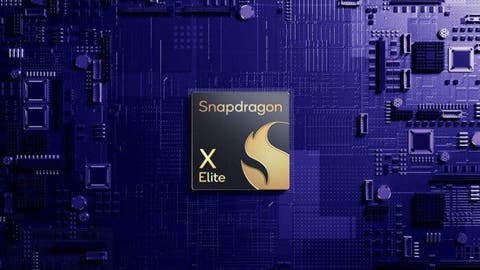This year’s October was packed with major launches. Qualcomm released the Snapdragon X Elite platform, which was a big step from its previous PC SoCs. Also, we’ve seen the launch of the Apple M3 lineup that’s based on the 3nm process.
Now, while the Snapdragon X Elite is based on a 4nm process, Qualcomm has come up with a big claim. It’s saying that the latest SoCs offer up to 21% better multi-core performance than the Apple M3. However, Qualcomm’s PR manager said that the experience will be different.
That is, consumers won’t be able to witness the edge that the Snapdragon X Elite chipsets have. And it’s mostly due to the chipsets targeting different operating systems than the Apple M3.
Closer Look at the Recent Performance Metrics of Snapdragon X Elite
According to a test on the Snapdragon X Elite chipset, it has achieved a multi-core score of 15300. In comparison, the Apple M3 gets a score of 12154. Qualcomm has performed this test on Geekbench 6, and you can check out the numbers from the benchmark in the image attached below.
That said, one of the clever moves from Qualcomm here is removing one crucial detail from the result. Yes, it’s the power limit. High performance won’t matter if the chipset draws too much power. After all, the Snapdragon X Elite SoCs are aimed towards laptops. So, efficiency plays a big role in terms of evaluation.
As you might know, Snapdragon X Elite has two power limits, which are 80W and 23W. Earlier tests of the chipset have shown that the chipset with the lower power limit is slower than Apple M2 in benchmarks. So, it’s highly likely that these benchmark numbers are coming from the 80W chipset.
Now, if it’s indeed the 80W, these benchmark numbers could be valid. After all, the difference between 23W and 80W is significant in terms of power draw. But this increased power limit of Snapdragon X Elite also means a better cooling system.
But Consumers Won’t Be Able to Enjoy the Performance Jump
While Snapdragon X Elite has an edge over the Apple M3 in benchmarks, users will have a different experience. At least, that’s what Sascha Segan, the senior public relations manager from Qualcomm, says. She says that the reason behind having a different experience is because of the operating system.
As you may know, Apple Mac devices with the M3 chipsets run on macOS. The Snapdragon X Elite platform, on the other hand, is targeting Windows. According to Sascha Sagan, macOS is a much better operating system than Windows. That’s why the Qualcomm chipset won’t shine on laptops or notebooks even when it has good hardware.
To be exact, Sascha Sagan says, “The experience is not going to be the same because they’re running macOS and we’re running Windows.” She added, “But in terms of hardware, which is the only thing we can control, it’s good hardware.” Segan has also recommended that consumers should not purchase a new laptop right now.
Instead, Segan suggested that consumers should wait for the Snapdragon X Elite notebooks to enter the market. However, it’s worth noting that all the benchmarks that we’ve seen are from reference laptops. In general, reference devices tend to perform better. Also, benchmark scores aren’t everything. It’s the real-world performance that matters the most. So, you should wait for consumer-grade units to hit the market to come to an actual conclusion. You can learn more about the two chipsets from the video embedded below. It offers in-depth analysis.
